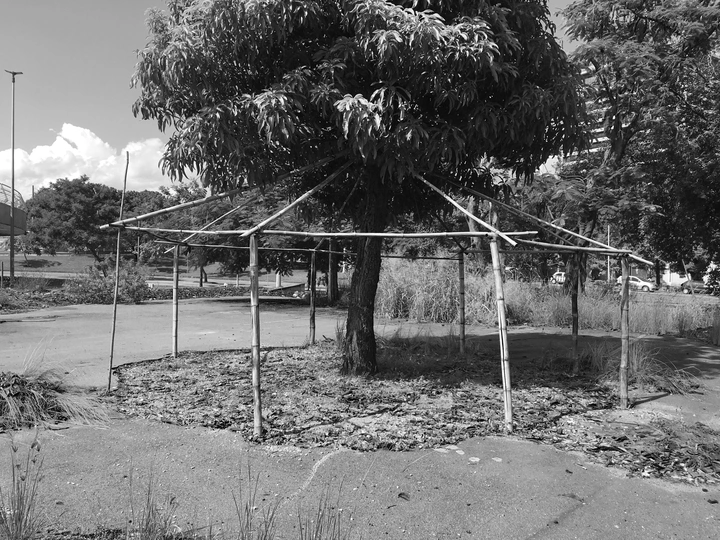8 Reactions for Afterwards

Gabriel Kozlowski
Mariana Meneguetti
Entre is a non-profit independent research collective of architects that investigates the effects resulting from urban transformations generated by architectural projects, through the medium of verbal narratives, photographs, maps and interviews.
Entre reflects on the interdisciplinary space of architecture based on its multiple relationships, whether with anthropology, art, advocacy, urbanism, making the margins of knowledge a meeting space, a condition of being together.
The group started in 2006 and today forms an independent research body with more than 60 interviews and 4 books published, highlighting “8 Reactions for Afterwards” – an investigation into the suspension of time of urban transformations in Rio de Janeiro and the modes of resistance of understated groups – and “Tomorrow (A)New” – a collective reflection on the post-pandemic future.
This production has already been shown in national and international exhibitions – including the Venice Architecture Biennale and the São Paulo Architecture Biennale – as well as in exhibitions and events in Brazil, the United States, Italy, England, Lebanon and Peru.
8 Reactions for Afterwards is a publication on architecture, urban transformations and their side effects.
Architecture is a broad spiraling process. We investigate a palimpsest-architecture, deployed in cycles of construction and deconstruction, of vertiginous piling-up and memory removals. We took the idea of “reaction” as the symbol for a transformation process in the production of city space. Reaction takes on both the cause and the consequence of an act, it is activated as much as it is the activating force. There are various cases in which the side effects of urban transformations become autonomous in relation to the original actions and lose their time reference. Transformations and their effects become confused in the chains of processes that come before and after them. Its rationale is never clear or definitive. These are changing states, accumulations and articulations from the stimuli of substrata. A reaction takes the role of another reaction in an interplay of changes to the urban space, the very ebb and flow that defines the shape of cities.
8 Interviews discuss key themes for thinking about the complexity of the contemporary space: Raquel Rolnik, Keller Easterling, Silvia Federici, Ailton Krenak, Paulo Tavares, Eyal Weizman, Alan Brum, Barbara Wagner & Benjamin de Burca. 8 Urban cases in Rio de Janeiro, identified in the trace of the mega events (World Cup 2014 and Rio 2016 Olympic Games), present spatial evidence of the current state of crisis in the city and the country: Aldeia Maracanã, Minha Casa Minha Vida (Estácio), Vila Autódromo, Campo da Mina, Porto Vida Residencial, Ilha Pura, Quilombo da Gamboa, Piscina de Canoagem.
8 Reactions extract, from the unfolding of these situations, the operations used to transform such territories, highlighting the movements and conflicting forces that act upon it: Demarcate, Colonize, Evoke, Crack, Stake, Replicate, Tie, Mask.